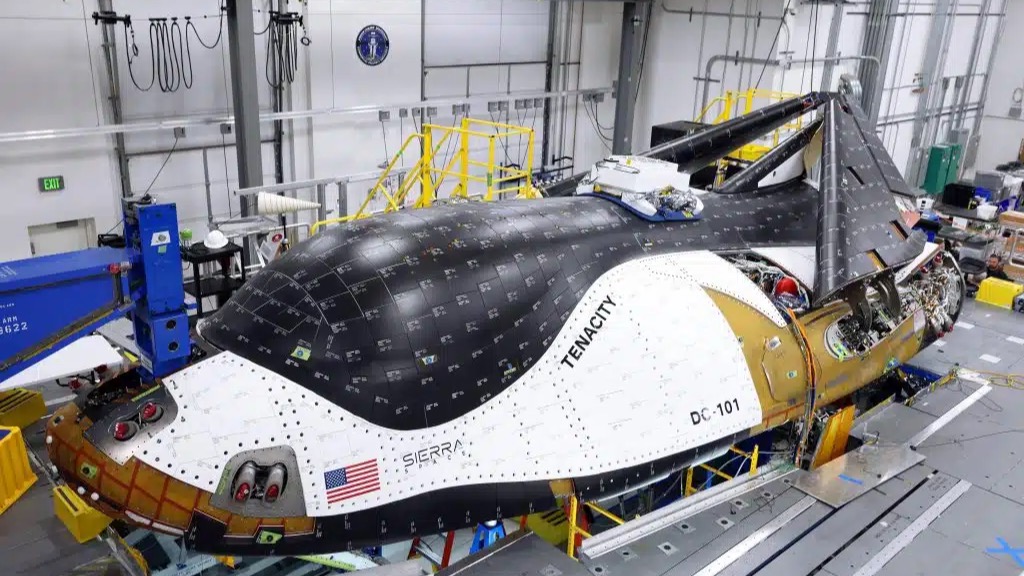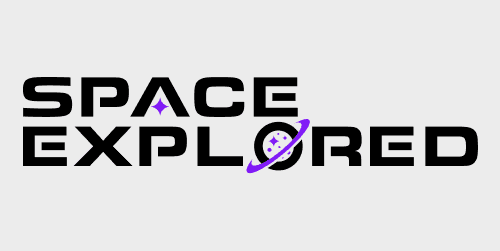
The Dreamchaser spaceplane has long been under development by Sierra Space and its parent company, Sierra Nevada Corporation. While intended to serve as the third option of NASA’s Commercial Resupply Services 2 contract, a change in its development timeline has removed that as an obligation.
NASA announced last week that it has modified its existing contract with Sierra Space to no longer include a berthing with the ISS on Dream Chaser’s first test flight. This has been a standard mission objective with other CRS providers like Northrop Grumman and SpaceX. However, Sierra Space claims it will better ease the company in getting the vehicle out of development and flying sooner.
In the same press release, NASA announced that the modification also included relieving NASA of its obligations to purchase a specific number of resupply missions to the ISS from Sierra Space, only purchasing what it requires to keep the station stocked for crewed operations.
Currently, NASA uses SpaceX’s Dragon 2 and the newly introduced Cygnus XL from Northrop Grumman, both of which could easily replace Dream Chaser for the remainder of the ISS’s lifespan.
“Development of new space transportation systems is difficult and can take longer than what’s originally planned. The ability to perform a flight demonstration can be a key enabler in a spacecraft’s development and readiness, as well as offering greater flexibility for NASA and Sierra Space,” Dana Weigel, manager of NASA’s International Space Station Program, said in a statement. “As NASA and its partners look toward space station deorbit in 2030, this mutually agreed to decision enables testing and verification to continue on Dream Chaser, as well as demonstrating the capabilities of the spaceplane for future resupply missions in low Earth orbit.”
Sierra Space plans to launch its now free-flying mission no earlier than late 2026.
Space Explored’s Take
Dreamchaser has been in development for nearly a decade, and that’s just for the CRS-2 contract version. The vehicle has been in the works for even longer; Sierra Nevada even tried bidding it for the Commercial Crew Program and the original CRS contract.
You may remember that Space Explored reported a “one year” timeline from launch back in 2022. That obviously wasn’t the case. The vehicle has been in a state of “final assembly” or “final checkouts” for a while now, and it seems like that can mostly be attributed to its reaction control system. It uses a green, non-toxic propellant system rather than the standard hypergolic propellants used by Northrop and SpaceX.
The change to a free-flying mission was first reported by Ars Technica, and Eric Berger has a rule that if any mission is scheduled to fly in Q4 of any year and that date is further than six months out, then the mission will be delayed. This rule, called Berger’s Law, has become pretty accurate.
With Dreamchaser no longer guaranteed NASA missions, slower than anticipated development times, and an unknown future with commercial space stations, its future seems bleak. However, the company has been determined to get it operational.
Dreamchaser could also serve as a Department of Defense testbed, replacing or supplementing work done by Boeing’s X-37B. However, the DoD hasn’t shown too much interest in that need; currently, its focus has been on proliferated satellite systems and Golden Dome.
If I had to bet, Dreamchaser may fly on its free flyer missions on top of its ULA Vulcan rocket; however, it likely will not survive the ISS’s retirement.
FTC: We use income earning auto affiliate links. More.



Comments